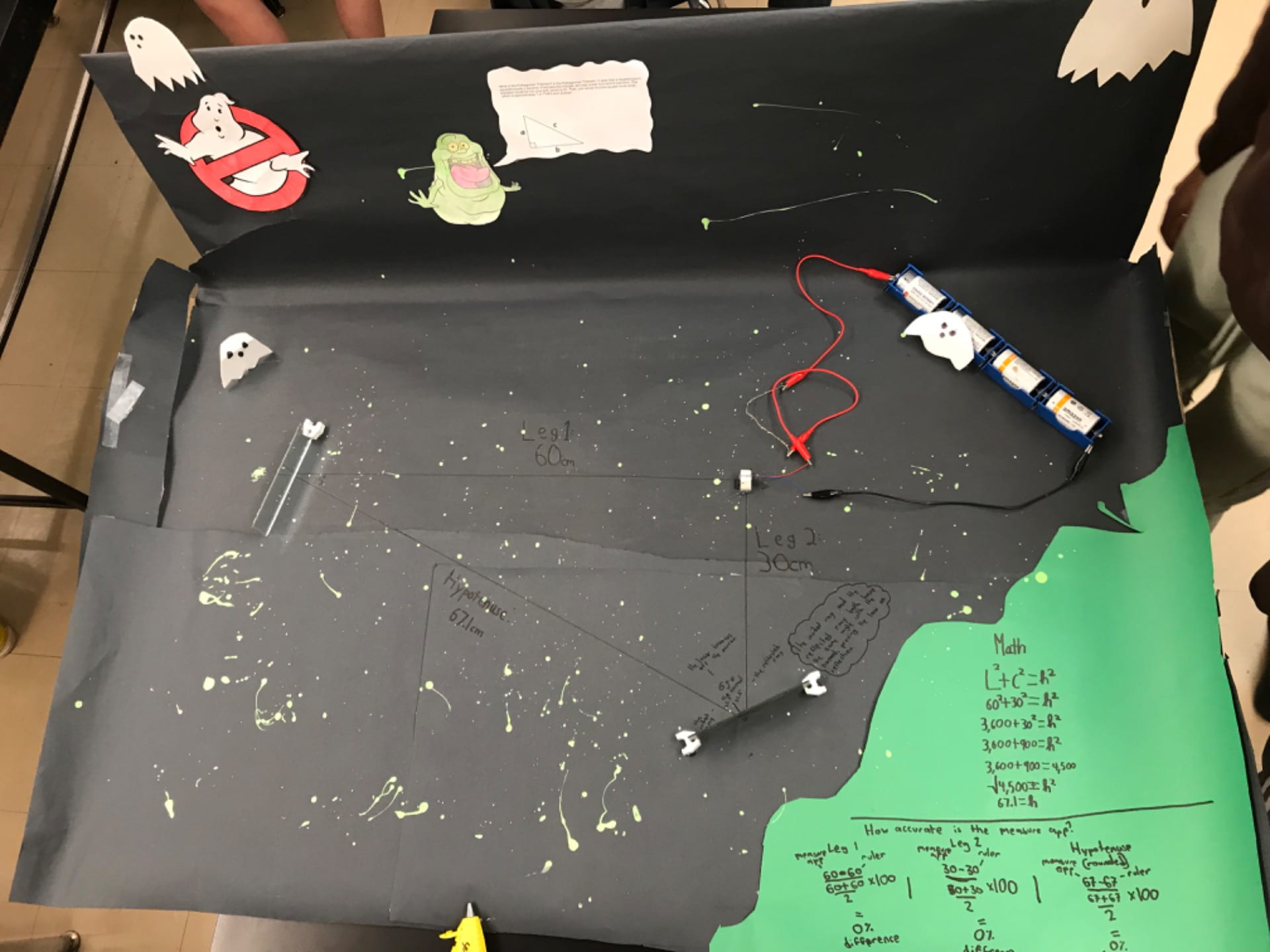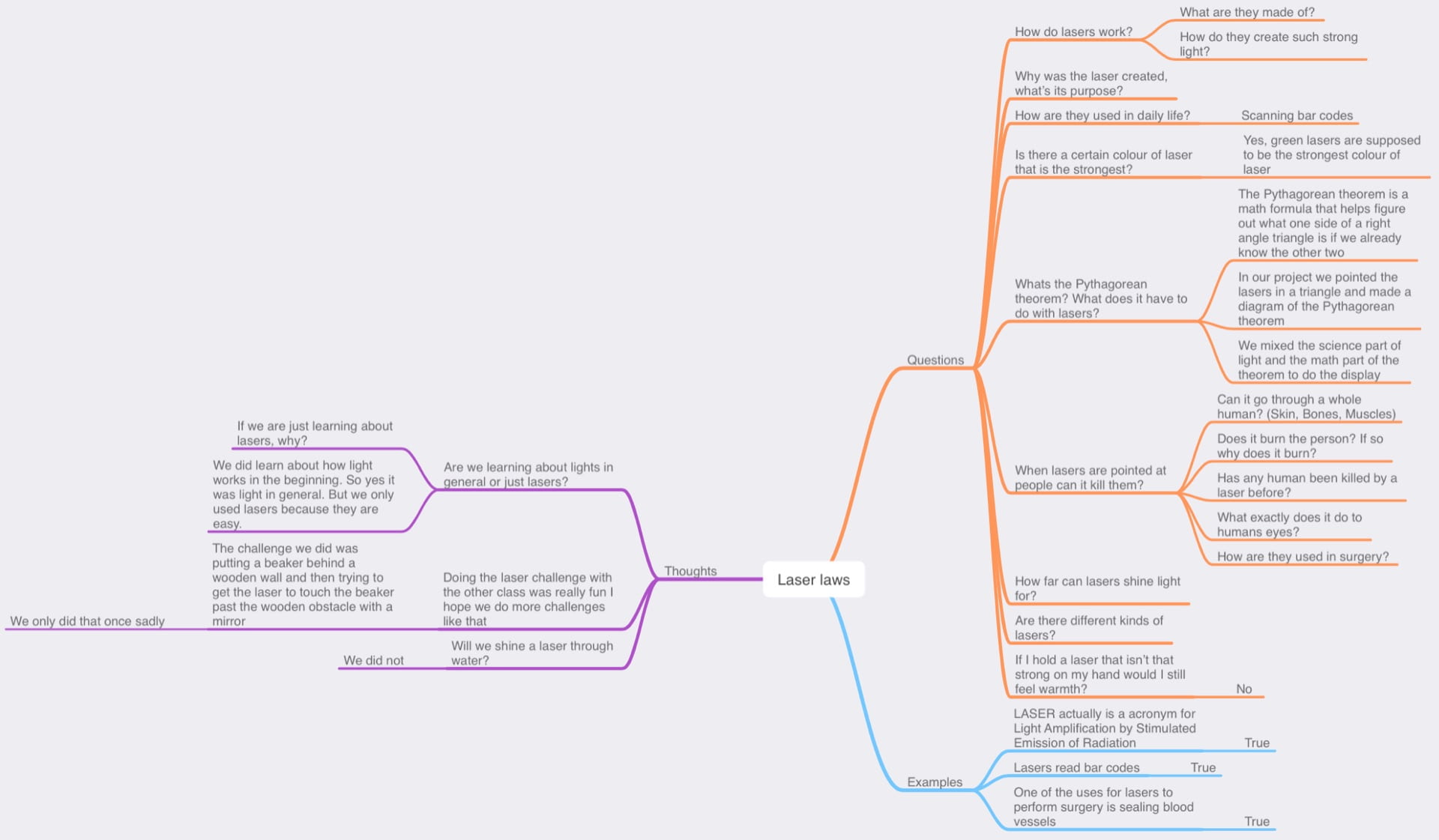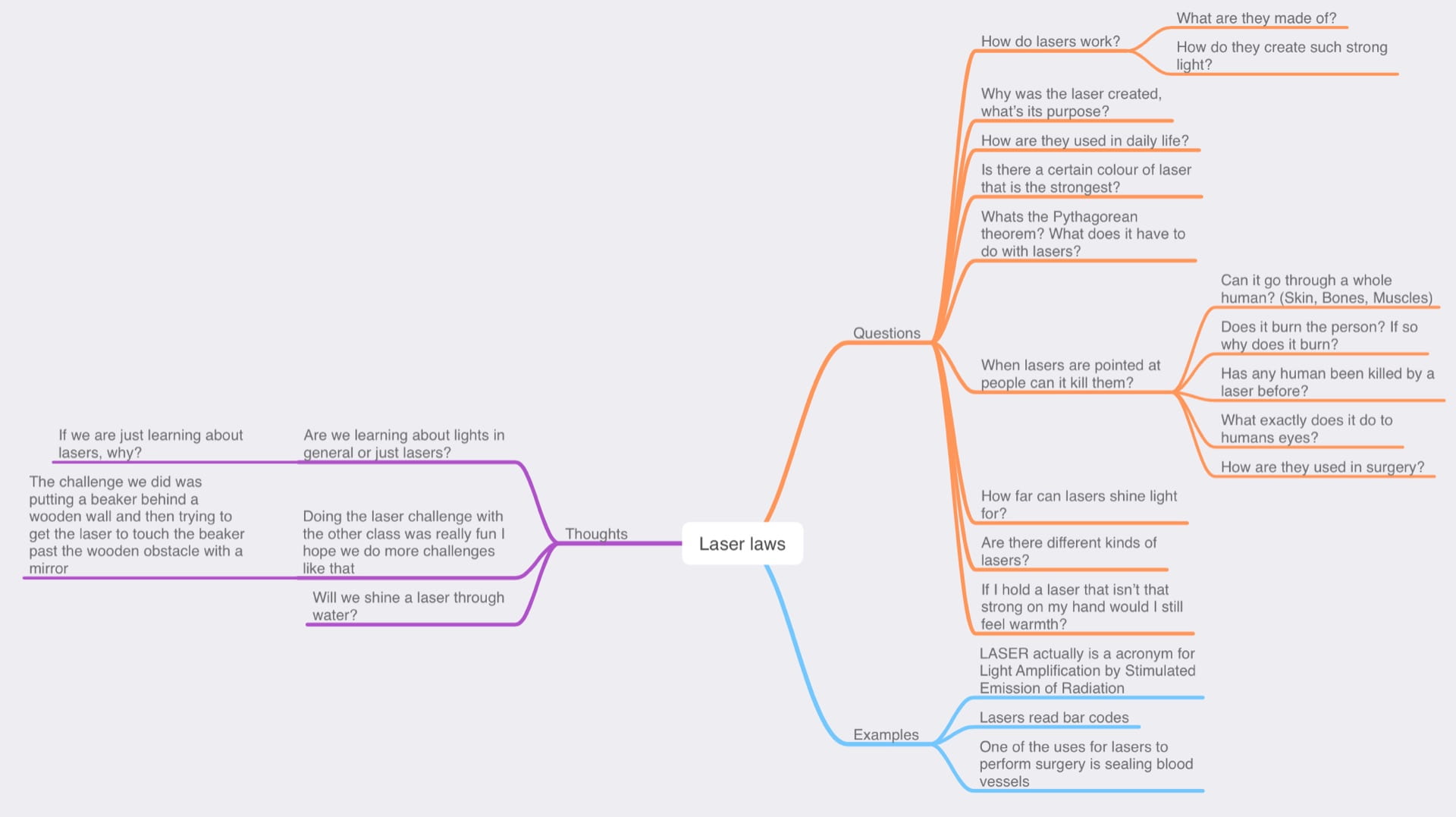In this Scimatics project we have learned about the law of reflection. We started by doing a few sheets of work introducing us to different kinds of mirrors, how light works, and different forms of reflection. Then we started forming a plan for the final laser law test. We all made displays that proved the law of reflection.
But what is the law of reflection?
The law of reflection states that when a ray (light beam) reflects off a surface, the angle of incidence is equal to the angle of reflection. In simple terms the ray that reflects off a surface reflects at the same angle off as it does coming onto it. As you can see in this photo below the incident ray is the one coming towards it then the reflected ray is the one that bounces off. The angle between the two are both the exact same. This law that both angles are the same is what we have learned about and made displays to prove. 
The first project we did to prove the law of reflection was with using a light box.  The light box was a small box that let out a strong ray of light. We used a mirror to reflect the light off and measure the incidence ray and reflected ray. My group (Charlie, Jasper, and Andrew) all measured the angles and it came out equal.
The light box was a small box that let out a strong ray of light. We used a mirror to reflect the light off and measure the incidence ray and reflected ray. My group (Charlie, Jasper, and Andrew) all measured the angles and it came out equal. 

Here is the lab write up I wrote: 
After learning all about how light reflects we finally got to the last project. We had to display proof of the law of reflection. Everyone got into groups and chose a theme for their project. I wasn’t at school the first week we started this display because I had Covid 19 but as soon as I came back I tried to catch up as much as I could. While I was off I stayed in contact with my group and tried to understand what was happening. When I got back I found out the topic for my group was the ghostbusters. We displayed the classic movie in our project by adding ghosts, green splatter, and the main character Slimer. Here is some photos of what the project we created looks like:
The basic plan for this project was to wire a battery up to a laser then shine the laser off a few mirrors to get back to the start. We then prove the law of reflection by the angles we use. But to prove that you have to have a laser to start with. How do you get the laser to work with some batteries?
first step: you need these supplies: four batteries, three wires (one black two red), five resistors, and a laser.
 Second step: twist all the resistors together so every wire is touching.
Second step: twist all the resistors together so every wire is touching.  Step three: connect all the batteries with the + and – all facing the same direction.
Step three: connect all the batteries with the + and – all facing the same direction.  Forth step: clamp the red and black cables to each end of the batteries.
Forth step: clamp the red and black cables to each end of the batteries. 
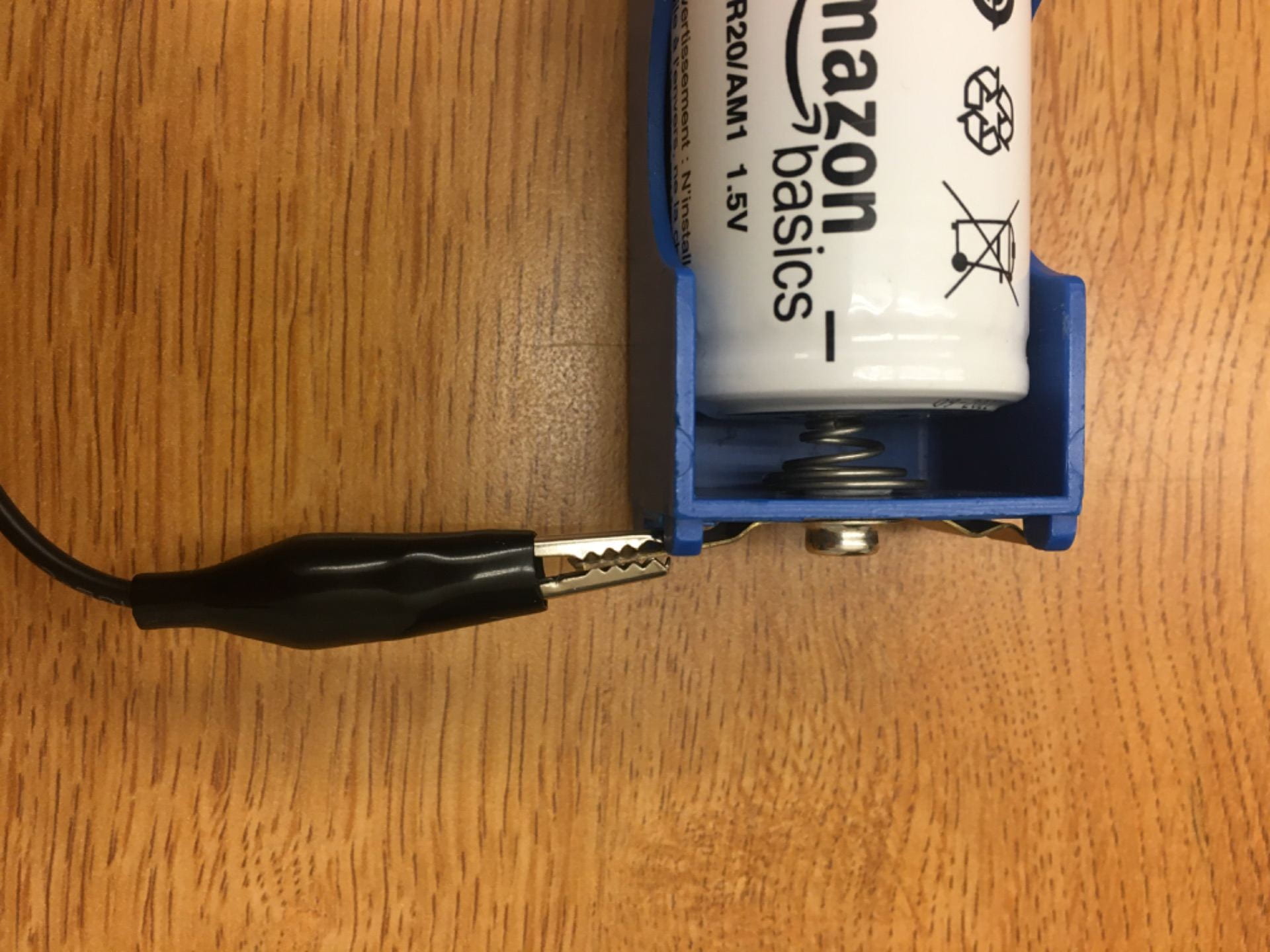 Fifth step: clamp on both red wires to the resistors.
Fifth step: clamp on both red wires to the resistors. 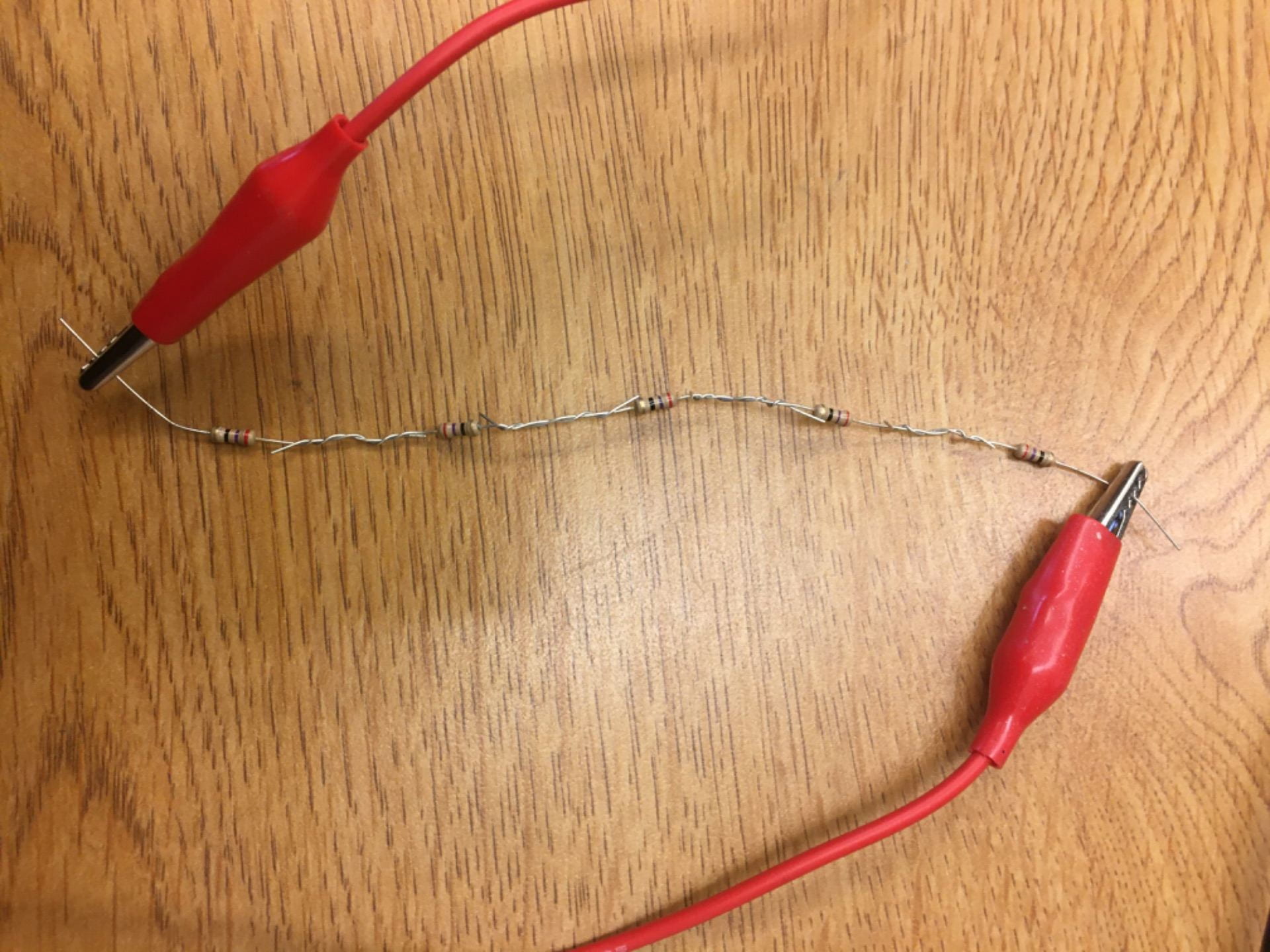 Then at the end it should all look like this:
Then at the end it should all look like this:  If everything is connected properly the laser should work now
If everything is connected properly the laser should work now 
I found this very interesting, I have never wired anything before and getting the laser to work was a very fun thing for me. Getting a p[ower source to flow through things I attached myself I found really cool.
Before we started the whole project we made a MindNode of everything we know so far then we add onto it at the end. Here is mine, the before and after:
In the start of this project we got a sheet of how we should work through out this project. 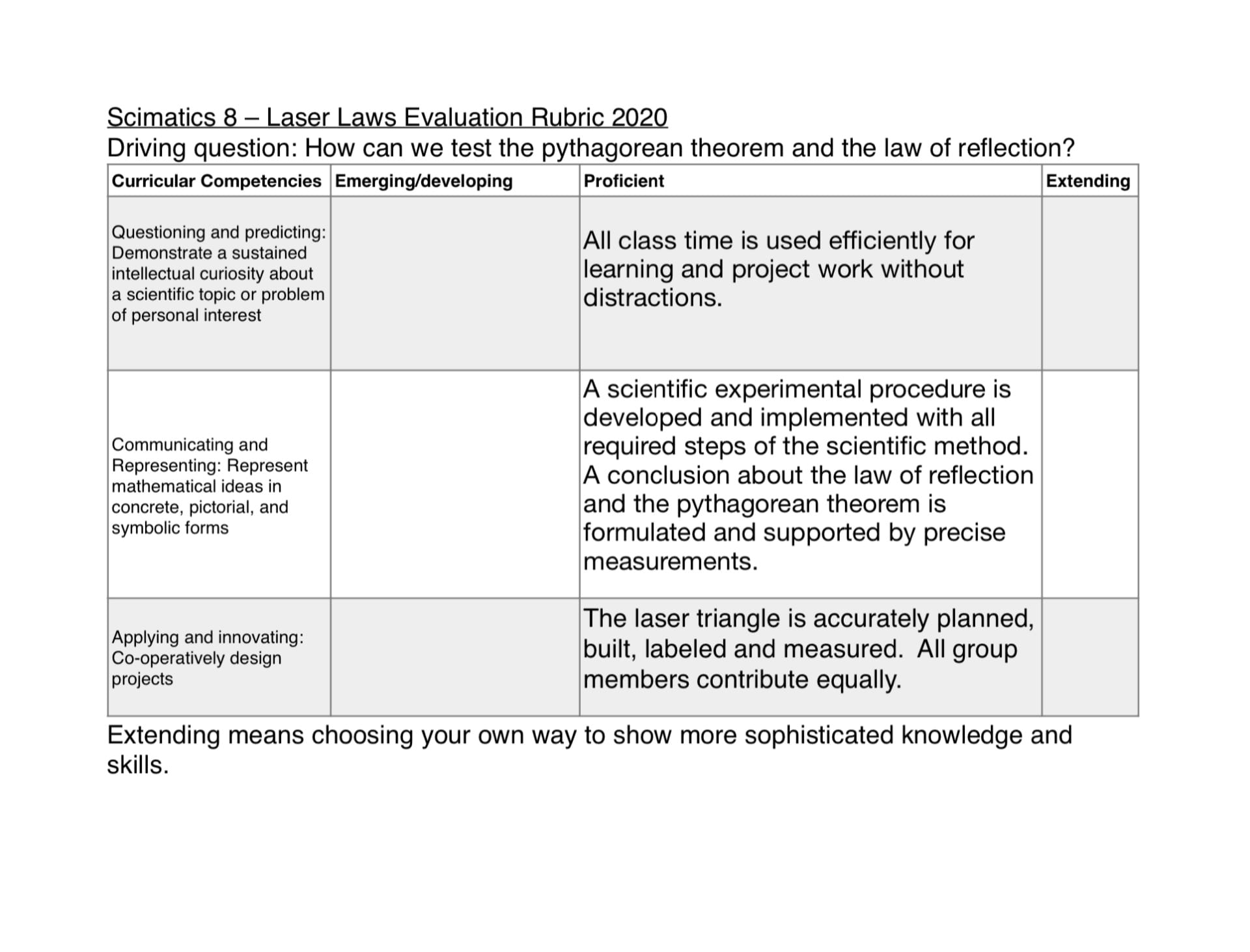
The curricular core competencies are questioning, communicating, and applying and innovating. I think my almost all my group did pretty good on these things.
My group:
and Jasper
Heres my answered version of the sheet we got:

After we got the display up the teacher added smoke so we could see our lasers better. Heres some photos on how our laser looked: 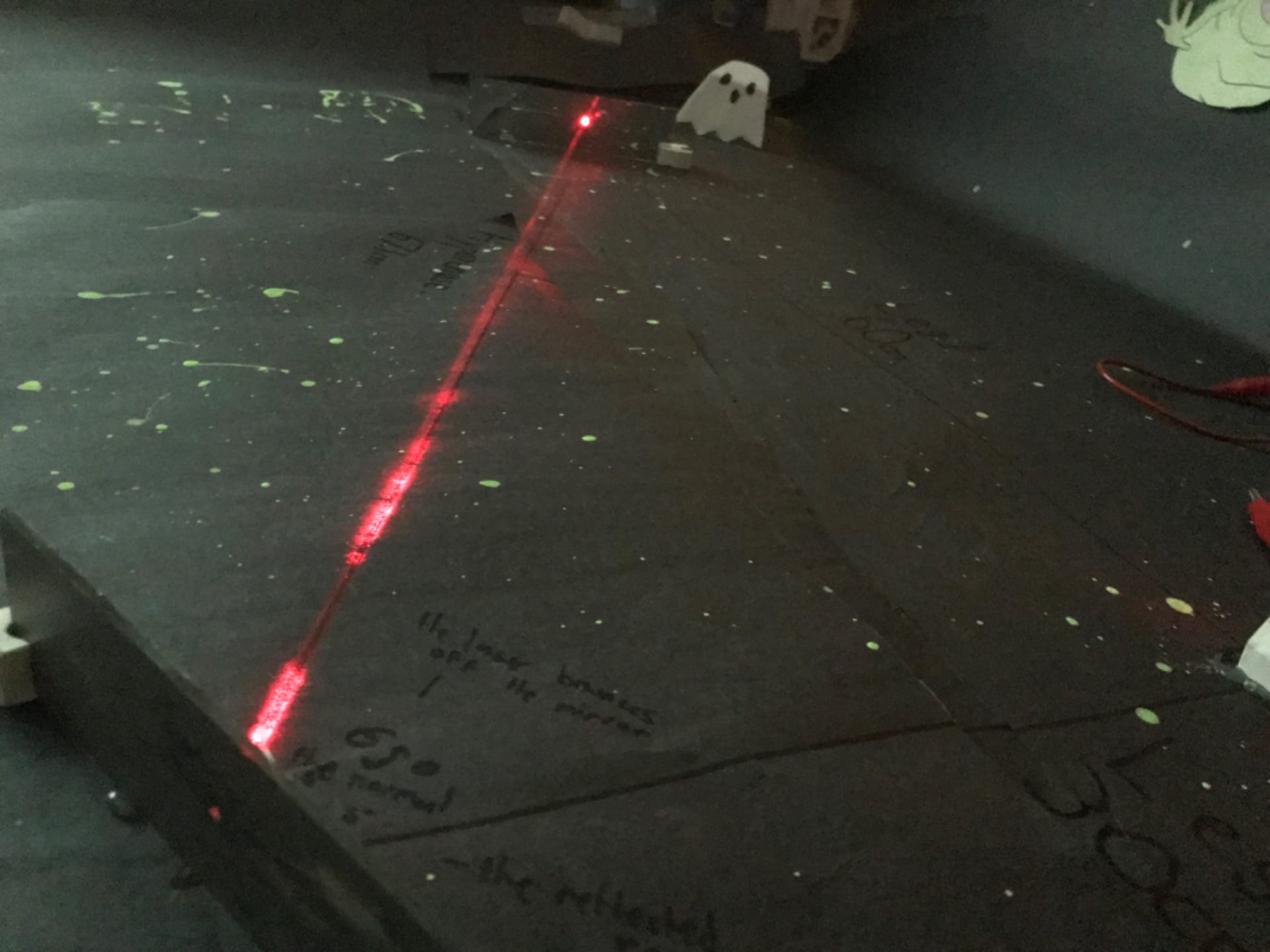

Overall I really like how it turned out and I would like to do something like this again sometime. I like the mixture of science and mathematics in this project. I also think my group worked well together. Thank you for reading 🙂 see you next time in another post

